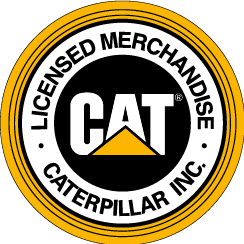
The Ultimate Home Reno Toolkit
The Ultimate Home Reno Toolkit What tools do I need for my home renovation? Are you remodelling your home? Start the renovation process by making
So you’re looking to get your hands on some tough new power tools, but you can’t quite wrap your head around all the different power tool terminology. From the basic components to the specialised features, here’s a glossary of all the power tool lingo you need to know.
Voltage refers to how much power the tool or battery can deliver. Power tools often come as either 12V or 18V. Most tradies opt for 18V tools for higher-powered performance. All CAT® tools are 18V, ensuring that you have all the power you need whether you’re onsite or in the garage.
Torque refers to the rotational force generated by a power tool. It’s particularly relevant in tools such as drills, impact drivers, and wrenches. Higher torque means more force, which means more efficient drilling, fastening, or loosening of screws and bolts. CAT® offers high-torque tools ranging from 65N.m to 350N.m depending on the tool’s application.
RPM, or revolutions per minute, is the measure of speed at which a power tool accessory rotates, such as a drill bit or saw blade. The higher the RPM, the faster the tool can cut, drill or sand. Consider the application and material of your job to figure out what RPM is needed in your tool.
You may have heard of brushed and brushless motors in power tools. Essentially, brushless motors are the premium option for power tools, offering:
All CAT® power tools use brushless motors to achieve high performance (except for the orbital sander which does not require it).

Most power tool batteries in the market today are lithium-ion batteries. While these are a great option, CAT® has recently introduced a new battery technology to its range: the Graphene battery. Though still a lithium-ion battery, the integration of graphene polymer into the battery cells results in lower weight, faster charge times, greater storage capacity, and a longer lifespan than typical Li-ion batteries. CAT® offers both a 4Ah Li-ion battery and a 5Ah Graphene battery, with the Graphene battery boasting ultra-fast charging times of 20 minutes.
Learn more about the CAT® GXB5 Graphene battery here.

Variable speed refers to the ability to adjust the tool’s operating speed, allowing the user to control the tool according to their specific needs, such as the material being worked on or the type of task being performed. For example, you should use a higher speed setting when screwing into hard timbers or when using screws with large diameters. Variable speed is common in the CAT® range, so you can adjust your tool to any situation.
The chuck is the mechanism at the front of a drill that secures the bit in place. There are a few aspects to look for in a chuck. They come in different types: keyless and keyed. Opt for a keyless chuck for quick and easy bit changes without the need to use a key. They also come in different sizes. Whether it is keyed or keyless, ensure that the chuck size is compatible with the accessories you plan to use.
Importantly, ensure your chuck is durably built. Unfortunately, many chucks are manufactured poorly and they’re often the first component of a power tool to break. For good longevity, CAT® chucks are manufactured from steel and are covered for the life of the tool’s warranty.

An auxiliary handle serves as an additional grip to give you more control in heavy-duty tasks. The CAT® DX13 Hammer Drill, Rotary Hammer, and Angle Grinder have an auxiliary handle that you can easily detach or attach when needed.

Auto spindle lock is a feature in some drills that locks the chuck in place when it is not in use. This makes it safer and easier to change bits or blades without the need for additional tools. It also has the additional benefit of allowing you to use the drill like a manual screwdriver which can be handy from time to time.
These are just a few basic power tool words to get you started, so that you know what to look out for next time you cop a new tool.
Want to learn more about power tools? Read more blogs here.

The Ultimate Home Reno Toolkit What tools do I need for my home renovation? Are you remodelling your home? Start the renovation process by making

Positec Group Limited, a licensee of Caterpillar Inc